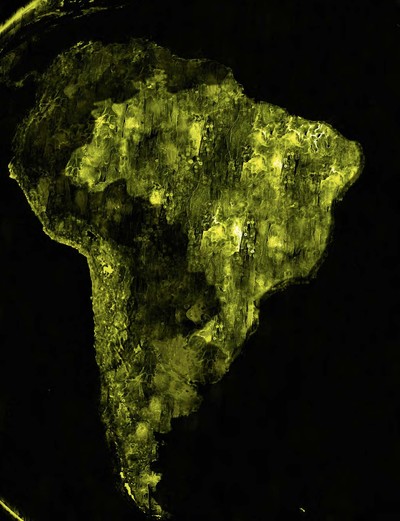How Brazil’s economic upturn transformed clothing into fashion.
By Flávio Rocha
Illustration by François Berthoud
How Brazil’s economic upturn transformed clothing into fashion.

If there ever were a ‘Brazilian miracle’, it would have to be the ten-year transformation of one of the most unequal countries of the world into a middle-class nation. Brazil now has the sixth largest economy in the world, the largest in Latin America and the second largest in the Western Hemisphere. According to Forbes magazine, in 2011 Brazil had the eighth largest number of billionaires in the world – ahead even of Japan. What has driven this transformation has been a fortunate combination of income growth, a fall in unemployment rates, the democratisation of access to credit and increased trust levels. And so the compressed demographic pyramid of deficiency and neediness has given place to a sparkling diamond shaped figure, with a wide centre that represents the so-called ‘New Brazilian Middle Class’.
We have seen that the combination of income growth, fall in unemployment and better access to credit has created a virtuous cycle that has allowed Brazilians to eat better, have a better lifestyle, to have easy and affordable access to electron- ic gadgets such as smartphones, and even to buy their first car. All this is revolutionary indeed, but nothing can compare to the effect this phenomenon has had on the fashion and beau- ty industries. While the expenditure in housing and food has grown in proportion to income growth (30 to 40 per cent), the expenditure that relates to fashion and beauty has grown five times more than income growth. Fashion and beauty have truly arrived for the ordinary Brazilian consumer, and they occupy a more important place in people’s daily lives.
This large-scale fashion breakthrough could not just have been shaped by demographic and economic phenomena, however. Alongside income distribution, something even more overwhelming has aided this growth – and that is the ‘democratisation of information’. Historically, clothing has had two different meanings to two different groups of people: those who have an income and access to information use their garments as a form of expression and identity, while those who do not have any of that perceive clothing merely as an alternative to nudity. But now a third group has been created thanks to the fact that the revolution in electronic media, the internet and the Brazilian soap opera phenomenon have democratised access to information at a rate that is much fast- er than that of the rate of the increase in income. And so this third group is something new to Brazil, and is made up of those ‘without income but with access to information’.
So when it comes to the meaning of fashion in Brazil, the old process has been broken. The exclusive and elitist world of the Brazilian fashionista is about to be invaded by voracious consumers who have been touched by the transforming power of fashion. Our company already has a mission to ‘democratise fashion’, to transform this exclusive and elitist world to one of inclusion and fashion equality for all. That is because we already understand the transformative power behind fashion and its relation to people’s self-esteem.
This universe that was known and used by a privileged and restrictive group of people 20 to 30 years ago in Brazil and in the rest of the world is now becoming more relevant to each and every person. In our company, Guararapes, we have been fortunate to possess a front-row seat to view the spectacle that is the ‘democratisation of fashion’ in Brazil. Guararapes is the largest fashion group in Brazil and also the owner of the Lojas Riachuelo (Riachuelo Stores) fashion retail chain. Riachuelo Stores has 183 shopping units throughout the country, as well as two industrial parks. In total, it employs more than 37,000 people. In addition, Riachuelo is the only major fashion retail chain in Brazil that researches, creates and produces most of its own products, rather than importing brands from out- side the country. Established in 1947, we have a lot of experience in the Brazilian retail market and a good and long view from which to compare today’s market with its new needs and demands, to the one Brazil has had in the past.
What we are seeing here now in Brazil are 40 million Cinderellas who have suddenly discovered the connection between fashion and self-esteem, and who are on their way to becoming dazzling princesses. Riachuelo works like a fairy godmother that bestows the magic of fashion to transform the lives of the many millions of Brazilian Cinderellas and princes who are waiting to metamorphose throughout our country.